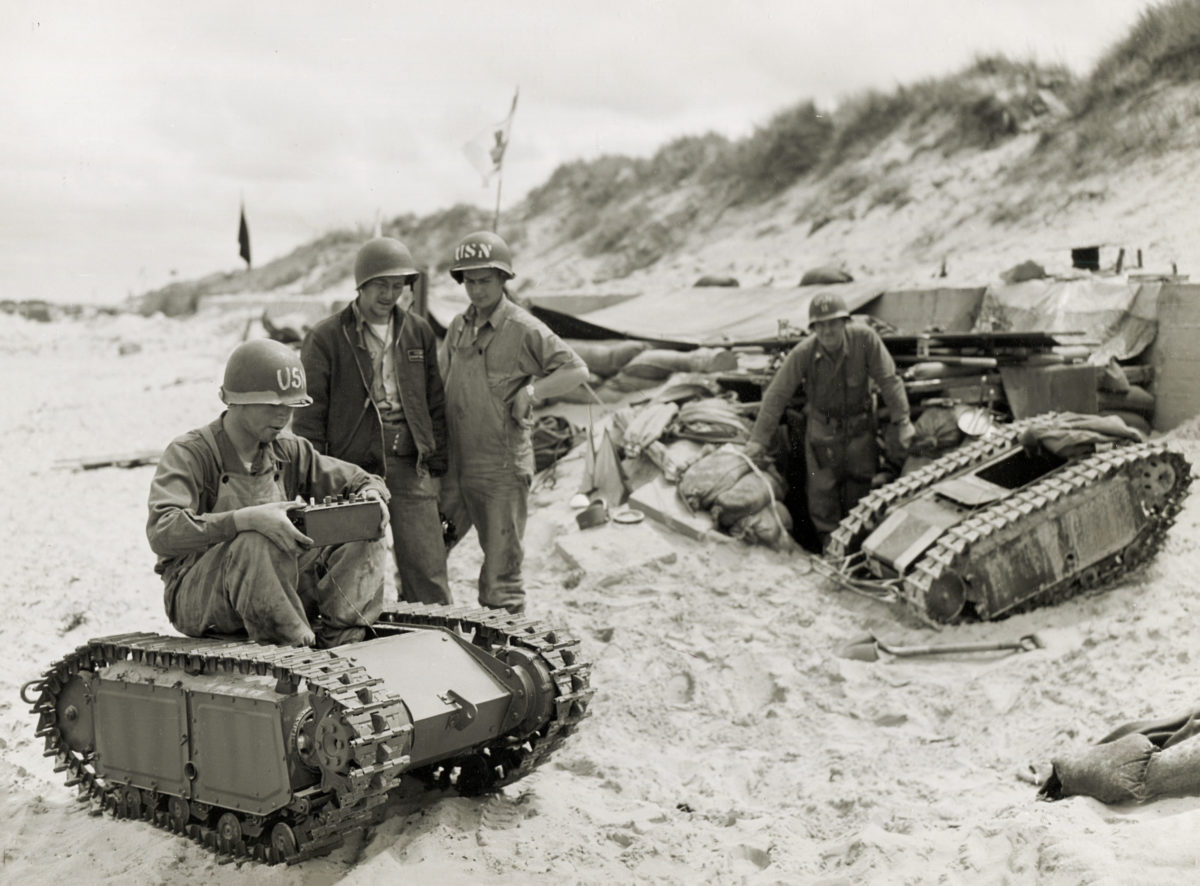It would be understandable if you thought this photograph showed American personnel playing with toys on the beach. But you would be wrong.
The caption for this image from the National Archives reads, “Members of the Navy’s 2nd Beach Battalion on Utah Beach playing with captured German ‘beetle’ tanks.
These miniature tracked vehicles were supposed to be remotely controlled up to a tank or large landing craft and then explode a large charge carried internally. They did not work on D-Day, but they were diverting to those with the time and the knack to monkey with them.”
The “beetles” were Goliath tracked mines, which had been developed by an automaker in Bremen under the orders of the Wehrmacht. The first version, the SdKfz 302, was powered by electric motors but had limited range; the SdKfz 303a had a gasoline engine. Operated via a control box that was connected to the Goliath by cable, the “beetle tank” was designed to deliver a payload of high explosive.
“Issued to combat engineers and special armored units, the Goliath was designed to disable enemy tanks, disrupt infantry units or demolish strongpoints,” writes HistoryNet historian Jon Guttman. “Its control cable proved vulnerable to cutting, however, most notably when the Germans deployed it against the Polish Home Army during the 1944 Warsaw Uprising. Though the Goliath saw little use, it did serve as the precursor of the modern radio-controlled robotic vehicles.”
historynet magazines
Our 9 best-selling history titles feature in-depth storytelling and iconic imagery to engage and inform on the people, the wars, and the events that shaped America and the world.


